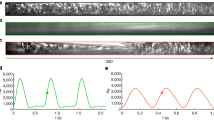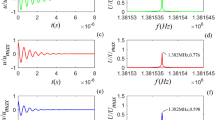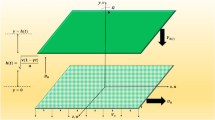Abstract
WHEN a fluid flows through a circular pipe it is generally accepted that there is a lower critical Reynolds number of approximately 2,000 below which the flow is laminar even when strong disturbances are present1, although a value of 1,600–1,700 has been quoted2.
This is a preview of subscription content, access via your institution
Access options
Subscribe to this journal
Receive 51 print issues and online access
$199.00 per year
only $3.90 per issue
Buy this article
- Purchase on Springer Link
- Instant access to full article PDF
Prices may be subject to local taxes which are calculated during checkout
Similar content being viewed by others
References
Schlichting, H., Boundary Layer Theory (trans. by Kestin, J.), 376 (McGraw-Hill, 1960).
Landau, L. D., and Lifshitz, E. M., Fluid Mechanics (trans. by Sykes, J. B., and Reid, W. H.), 114 (Pergamon Press, 1959).
Author information
Authors and Affiliations
Rights and permissions
About this article
Cite this article
JAMES, D., MORTON, A. Effect of Vibrations on the Transition Regime in Pipe Flow. Nature 214, 692–693 (1967). https://doi.org/10.1038/214692a0
Received:
Issue Date:
DOI: https://doi.org/10.1038/214692a0
This article is cited by
Comments
By submitting a comment you agree to abide by our Terms and Community Guidelines. If you find something abusive or that does not comply with our terms or guidelines please flag it as inappropriate.



